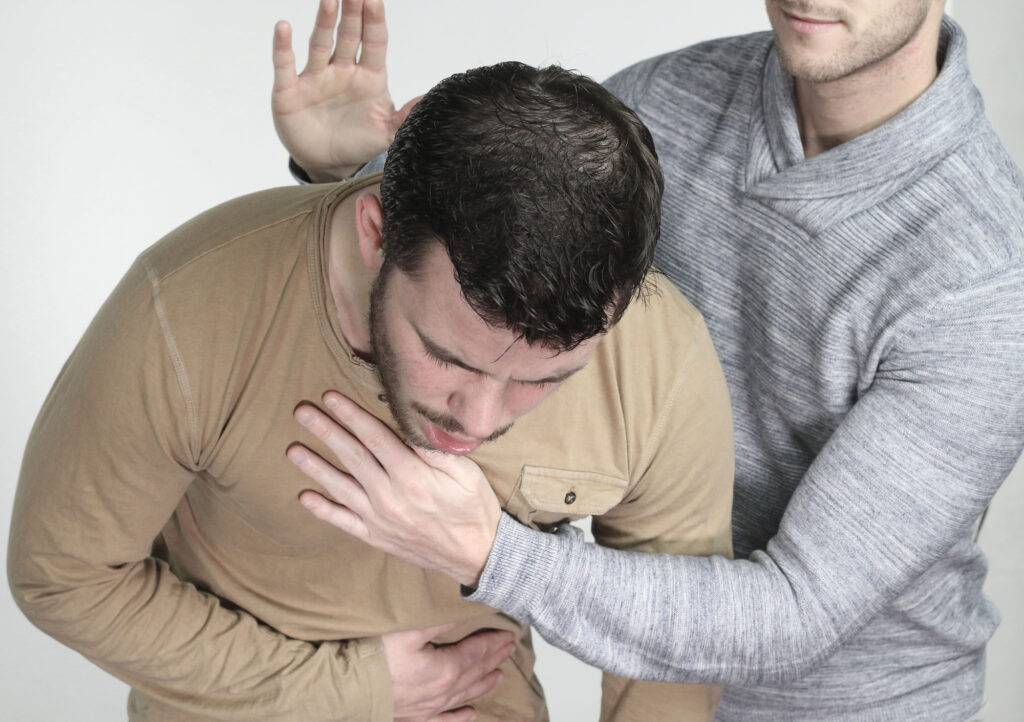Acting Swiftly: What to Do When Someone is Choking

Emergencies can strike at any moment, and knowing how to respond can be the difference between a life saved and a tragic outcome. One such critical situation is when someone is choking. Choking occurs when an object becomes lodged in the throat or windpipe, obstructing airflow. In this blog post, we will guide you through the essential steps to take if you encounter someone who is choking. Remember, staying calm and acting swiftly can make all the difference!
1. Recognizing the Signs
The first step in aiding a choking individual is recognizing the signs. Look for these common indicators:
- Inability to speak or cough.
- Hoarse voice
- Clutching their throat.
- Face turning red or blue.
- Struggling to breathe or gasping for air.
It is especially important to pay attention to these signs in children. Keep a close eye on children at all time to avoid a choking emergency.
2. Assess the Severity
Choking can vary in severity. If the person is still able to cough forcefully, encourage them to do so. Coughing is the body’s natural way of dislodging an obstruction. However, if their coughs are weak or nonexistent, immediate action is needed.
3. Perform the Heimlich Maneuver
The Heimlich Maneuver, or abdominal thrusts, is a technique designed to expel an obstructing object from the airway. Follow these steps:
- Stand behind the person and wrap your arms around their waist.
- Make a fist with one hand and place the thumb side against the person’s upper abdomen, just above the navel.
- Grab your fist with your other hand and give quick, inward and upward thrusts to dislodge the object.
- Repeat thrusts until the object is expelled or the person becomes unconscious.
You can use this maneuver on yourself if you are along when choking. Follow these steps:
- Make a fist with one hand, and wrap your other hand around it tightly.
- Place the thumb side of your fist right below your ribcage and about two inches above your belly button.
- Quickly thrust your hands inward and upward five times.
- Repeat this process until the object is dislodged.
You can also lean over a chair, counter, or table edge. Then, sharply and quickly thrust your upper abdominal area against the edge.
4. If the Person Becomes Unconscious
If the person loses consciousness, you should immediately start CPR (Cardiopulmonary Resuscitation). Follow these steps:
- Lay the person flat on their back and call for emergency medical help.
- Begin chest compressions by placing the heel of one hand on the center of their chest and the other hand on top.
- Use your body weight to press down firmly and quickly at a rate of 100-120 compressions per minute.
- After 30 compressions, give two rescue breaths. Tilt their head back slightly, pinch their nose, and give a breath until you see their chest rise.
- Continue cycles of 30 compressions and 2 rescue breaths until help arrives or the person starts breathing on their own.
5. Prevention
Prevention is always better than a cure. To reduce the risk of choking:
- Cut food into small, manageable pieces, especially for children.
- Avoid giving very young children small objects that could be easily swallowed.
- Encourage chewing thoroughly and eating slowly.
- Educate family members about the dangers of eating and playing at the same time.
Conclusion
Knowing how to respond when someone is choking can save a life. The key is to stay calm, assess the situation quickly, and take immediate action. Performing the Heimlich Maneuver and administering CPR when necessary are critical skills that everyone should familiarize themselves with. By being prepared and knowing what to do, you can make a significant impact in a moment of crisis. Remember, every second counts.

